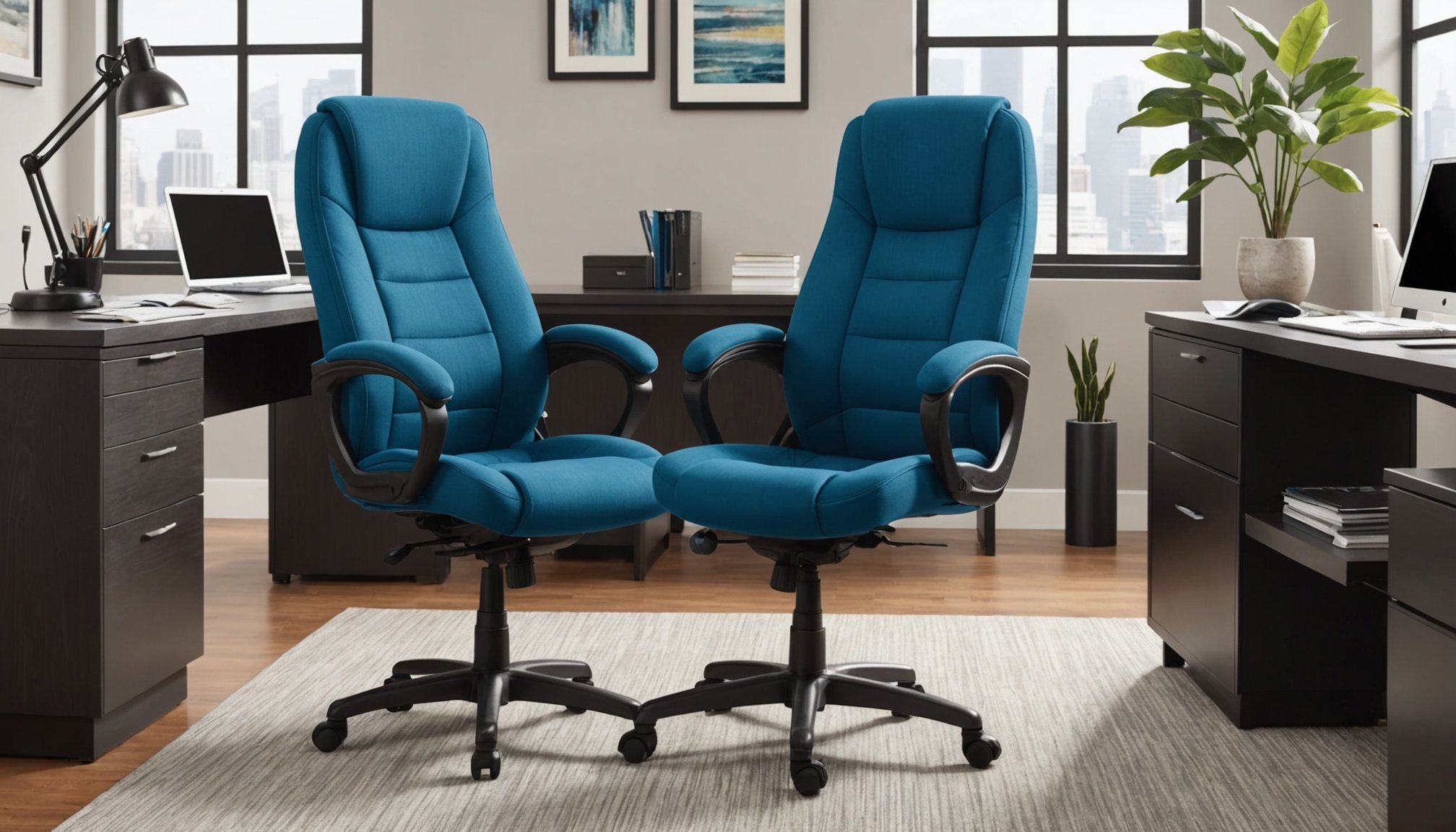Overview of Office Chair Fabrics
Office chair fabrics play a critical role in providing comfort during long work hours. The right comfort materials can transform an ergonomic chair into an inviting seat that supports your body even after hours of use. When selecting fabric for office seating, it’s essential to focus on how these ergonomic chair textiles affect breathability, durability, and ease of maintenance.
One factor to mull over is the breathability of the fabric. Materials like mesh enhance air circulation, keeping users cool throughout the day. Additionally, durability is crucial; fabrics like leather or high-quality synthetic options resist wear and tear, making them ideal for high-usage settings.
Have you seen this : Elevate Your Style: Expert Tips for Wearing a Bodycon Midi Skirt to Impress at Fashion Industry Meetings
There are various types of fabrics commonly found in office chairs, each with unique benefits. Mesh chairs provide breathability, promoting a cool seating environment. Leather, although less breathable, offers a sophisticated look and easy cleaning. Fabric chairs, usually made with polyester or a blend, balance comfort and cost-effectiveness, while offering a wide range of colours and patterns.
Choosing the right fabric involves considering personal preferences and work environment factors. Balancing these elements ensures the comfort materials used in your chair support both ergonomic needs and aesthetic desires.
Additional reading : Elevate Your Office Fashion: Chic Ways to Flaunt a Bold Patterned Scarf
Popular Fabric Types and Their Characteristics
Exploring different fabric types helps you make informed decisions when selecting material for various needs. Each fabric has unique properties, suitable for specific purposes and preferences.
Polyester
Polyester is well-known for its durability and resistance to wear, making it a popular choice in many contexts. Withstanding stretches and tears, it is ideal for long-term use. Polyester also boasts comfort features like softness, yet it remains highly breathable, making it suitable even in warmer conditions. Cleaning polyester is relatively easy—usually machine-washable, it requires minimal maintenance to retain its appearance.
Mesh
Mesh fabric elevates breathability, facilitating temperature regulation for prolonged comfort. It offers excellent support and flexibility, ideal for products like ergonomic chairs designed for extended sitting. The material adapts to the body’s contours, providing both structural support and comfort.
Leather
Favoured for its luxurious comfort and aesthetic appeal, leather offers a timeless look. Genuine leather is highly durable but requires regular maintenance to ensure longevity. Synthetic leather provides a cost-effective alternative, with low maintenance but often sacrificing some natural appeal and durability compared to genuine options.
Cotton
Natural feel and exceptional comfort are hallmarks of cotton. It is a sustainable choice, reflecting positive environmental considerations. Cotton requires care—gentle washing preserves its quality over extended use.
Wool
Renowned for its warmth, wool also offers remarkable comfort over time. The fabric’s natural moisture-wicking properties make it ideal for maintaining dryness and warmth. Perfect for colder climates, wool suits various settings requiring additional warmth.
User Reviews and Testimonials
Choosing an office chair can be a bit overwhelming, given the array of options available. Office chair reviews provide valuable insights into user experiences with different chairs, especially when it comes to fabric choices. Users typically offer feedback on the comfort and durability of materials like leather, mesh, and fabric blends.
User experiences with these chairs often highlight how different fabrics affect the comfort levels. Leather is generally praised for its sleek appearance, but some users noted it could become uncomfortable over long periods. Mesh, on the other hand, is frequently recommended for its breathable quality, which provides a cooler seating experience. Fabric blends garner mixed reviews; they are appreciated for durability but criticized if not adequately cushioned.
In terms of fabric recommendations, several users pointed out brands like Herman Miller and Steelcase for their ergonomic designs and high-quality materials. Herman Miller, especially with its Aeron model, receives accolades for its innovative mesh backing, which enhances support and airflow. Meanwhile, Steelcase is often lauded for integrating comfortable fabric combinations that offer sustained comfort throughout extended sitting durations. By focusing on these user experiences and feedback, potential buyers can make informed decisions when selecting an office chair.
Tips for Selecting the Right Fabric
When diving into the office chair buying guide, it’s crucial to consider not only ergonomics but also the suitable fabric. Personal comfort is paramount. Evaluating your individual needs and preferences can steer you to the perfect choice. Are you someone who prefers a cooler material, or do you lean toward something plusher?
The work environment plays a significant role in fabric selection tips. For a cooler office, you might look for warm, cozy fabrics, whereas breathable materials are ideal for humid areas. Specially designed chairs with adaptable fabric can elevate overall comfort.
Don’t underestimate the power of testing fabrics before making that final purchase. It’s beneficial to feel the fabric firsthand. How does it react under your skin? Is it irritating or smooth? Such exploration, part of ergonomic considerations, ensures that your chair will support hours of productivity without discomfort.
Finally, remember the importance of practicality. Does your work environment expose your chair to high wear or potential stains? Choosing a durable, easy-to-clean material can save time and hassle. Consider these factors, and select a fabric that’s crafted to withstand your specific work demands.
Long-term Use Considerations
When selecting office furniture, the fabric durability is a crucial factor. The longevity of fabric types varies significantly, impacting both value and comfort. Fabrics like leather and synthetic blends tend to offer substantial durability, resisting wear and tear over time. These materials often maintain their appearance longer, ensuring that your office space remains professional-looking.
To preserve the fabric’s integrity, effective maintenance is essential. Regular upkeep can include vacuuming fabrics to remove dust and debris, as well as addressing stains promptly with suitable cleaning agents. Specific textile types might benefit from professional cleaning services to extend their lifespan further. Consistent maintenance not only improves aesthetics but also supports optimal hygiene in office settings.
In addition, the choice of fabric plays a significant role in office ergonomics. Fabrics should ensure comfort, allowing for proper posture and movement throughout the workday. Breathable materials can enhance comfort, reducing the risk of discomfort and fatigue. Moreover, adaptable fabrics that accommodate the body’s natural contours are ideal for maintaining an ergonomic workspace. By considering these factors, you can make informed decisions that benefit long-term productivity and well-being in the office environment.






